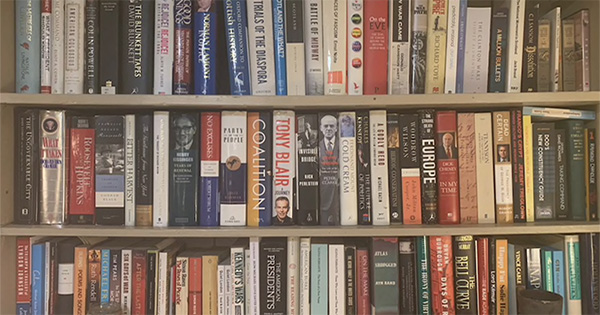Writing a review is usually accepted as one of the most boring assignments taking much time and efforts. Meanwhile, very few know how engaging the process can be provided the attitude to the performed task is not based on prejudice. What’s even better, it is not that long if you choose correct strategy.
This article discloses the core moments the author should take into account to make the work on the review efficient.
Concentrate on the structure and content of literature review, rather than style

It is about priorities. The attempts to cope with everything at once can hardly bring quick result or satisfaction, so do not start working on your paper without a clear idea about your strategy and tactics. Literature review format can’t come on the same stage as content or structure. Think of how you will do it, what to start with, and what your further steps will be to ascertain you will not lose focus and perform the task to the best of your ability.
- The first step: before setting to work, choose your approach. You need to demonstrate your awareness in the theme and the author’s idea without running to extremes. Willing to show your in-depth understanding of all the undertows, you can furnish your literature review with too many facts. If we compare it with cooking, it’s like adding too many spices to the dish. Trying to include all you want to share with the audience in small paper like literature review is a challenging task. Don’t follow this method for the surplus makes your “dish” hardly “eatable”.
Instead, do your best to make it interesting for your reader. Be ready to rewrite every single sentence after your first draft is ready, but make sure you convey the main ideas to the audience.
- Step two: start with jotting down the principal points. They will form the structure or the basement if comparing the process of writing with building. For the beginning, create an outline consisting of a thesis, a skeleton of the article (the main points), and some accents depending on the type of the literature review that you were assigned.
- The third step: make walls. Obviously, it’s not yet the time to choose the wallpapers or the decoration (read “style” and “format”), but just the moment to take care of content of literature review. Don’t pay attention to the presentation of your first draft when adding content to the created structure. Don’t get stuck on the vague statements and literature review format! Keep putting one foot in front of the other! Remember: there is little beauty in grey walls, but no one can overcome this stage of construction.
The point is that you need to start writing. Don’t mind your stylistic, punctuation or even grammar inaccuracies as you proceed: a disorderly made first draft is normal.
- Step number four: improve your creation. Now you need to polish your floor, walls, and the roof – it’s high time for painting and decoration! Read the paper once, twice, or three times to improve literature review format, style, grammar, and the rest of nuances, but try not to be a perfectionist for this is a road to nowhere.
Get it done little by little
This part is devoted to the balance of researching and writing. The general mistake is to set to writing a review as soon as the research stage is over that makes the beginning complicated. To overcome this difficulty, analyze one by one every source as you read it, and at the end of research, you will have a bundle of ideas to compose your article with. The terminative stage of researching is free-writing when you’ll point out the best points out of the researched. On the average, it takes from 10 to 15 minutes.
Seek criticism
No matter what is the length of his writing experience, every author has some strengths and limitations. Not all the drawbacks can be easily detected during the first, second, or even third revision. Writing a review, you learn it by heart which prevents from being objective. To offer your reader the best piece of work, first, offer some person to look it through. Here, you have plenty of options to choose from: ask your supervisor, experts like UK essay writers, some peer, a friend of yours, parents or any other person whose opinion you find reliable. Be ready to accept criticism with gratefulness and offer your help in return.
Determine the scope
Perfectionists should take into account this detail to optimize their work on literature review. I experienced the difficulty of this kind. Not to turn crazy by the end of the process of writing, don’t make attempts to cover the maximum possible number of aspects reflected in work or to represent the largest amount of views on the central ideas. The best example of literature review is not the one that offers the reader the longest bibliography or boasts of the largest number of sources but the one that contains an insight. Your writing should represent a coherent paper. The way of presentation should make it clear to the reader that you’ve processed a wide range of sources to help them grasp the subject of discussion.
Apply critical thinking
Ascertain your literature review does not look like a summary of the most credible sources you’ve found. This type of writing is much more than just a list of someone else’s ideas! This work should illustrate the author’s position. The best presentation is the one containing analysis that unites the opinions of other authors bringing to the surface your position. For efficient argument, incorporate contradictory views and make emphasis on the aspects that were not properly researched in the majority of sources.
Just do it! The devil is not so black as he is painted, and the literature review is not so boring as it is rumored. You may not believe it for now, but writing a review can be both fun and pleasure if you follow an easy approach.
This is a guest blog by Sandra Larson

The tale a second hand book tells

Six reasons why paper books are better than e-books.

The Sandman: A TED Talk (In Blog Form)

How to Save on Your Favorite Books: A Guest Blog

How Books Have Shaped My World: A Guest Blog

